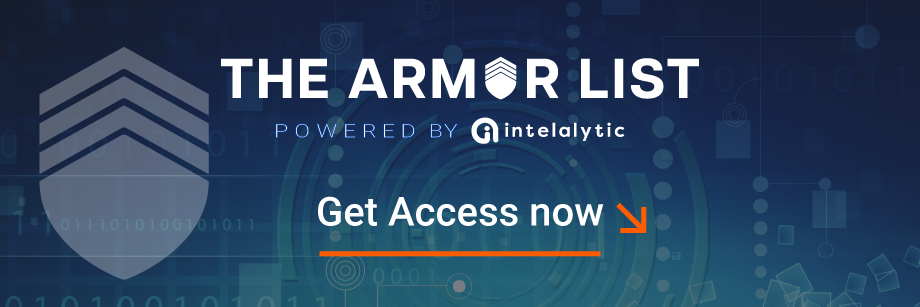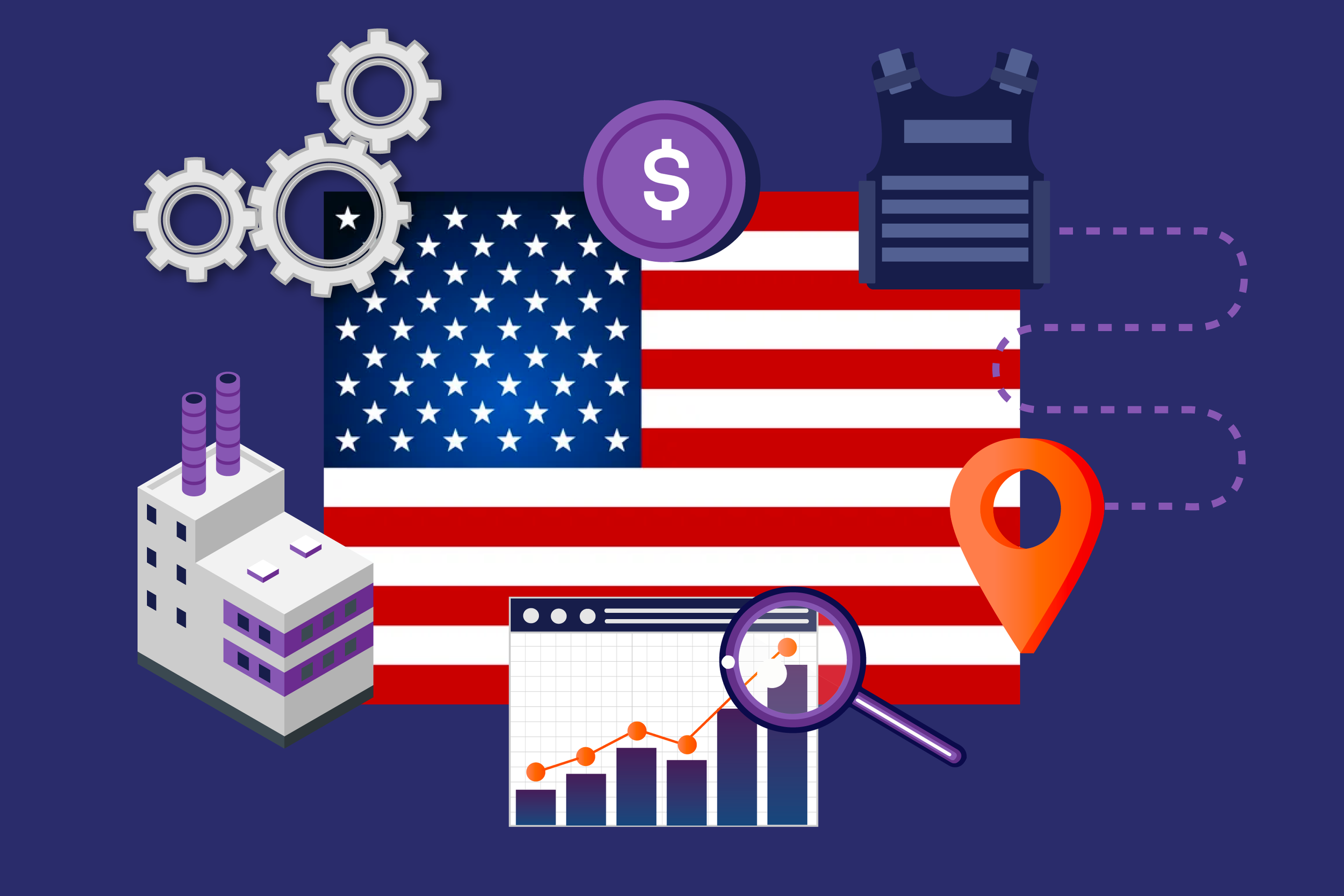America First, Armor First: How Trump’s Return Could Redefine U.S. Body Armor Manufacturing and Defense Supply Chains
As of February 25, 2025, Donald Trump’s return to the White House signals a bold pivot in U.S. defense policy—one that could reshape the body armor industry and bolster the backbone of law enforcement, military, and public safety. With a renewed "America First" agenda, the administration is poised to prioritize domestic manufacturing, secure critical supply chains, and enhance national readiness. For those of us who understand the stakes, whether it’s a beat cop in a high-risk precinct or a soldier on deployment—this shift carries weighty implications. It’s a potential boon for American body armor makers, but it’s not without its obstacles. Here’s a deep dive into what’s at play, with IntelAlytic and The Armor List stepping up as indispensable allies for the industry.
The Policy Framework: A Blueprint for Self-Reliance
Trump’s track record offers a clear preview of what’s coming: a laser focus on revitalizing U.S. manufacturing, reducing dependence on foreign suppliers, and strengthening the nation’s security apparatus. During his first term, he pushed "Buy American, Hire American" initiatives, and this time around, that ethos is expected to hit harder. For the body armor sector, several policy levers stand out.
First, expect stricter Buy American mandates. Federal contracts—whether for the Pentagon’s special operations forces or local police departments tapping into grant programs—will likely prioritize U.S.-made ballistic vests, plates, and helmets. This isn’t just about patriotism; it’s about ensuring that the gear protecting our front-line defenders meets rigorous domestic standards without the vulnerabilities of overseas sourcing.
Second, economic incentives will play a big role. Tax breaks for manufacturers who keep production stateside, paired with tariffs on foreign competitors, could tilt the scales toward American firms. This approach aims to counter the flood of cheap imports that have long undercut U.S. companies, especially in price-sensitive civilian markets that spill over into law enforcement procurement.
Finally, defense spending is set to climb. Trump’s first administration saw Pentagon budgets swell, and his return promises more of the same. That means increased demand for advanced armor systems—lightweight ceramics, next-gen soft armor, and multi-threat designs tailored for evolving risks. Couple this with his vocal "law and order" stance, and we’re looking at a surge in federal funding for police protective gear, especially in urban hotspots and border regions.
Source: DoD
For those who wear the badge or the uniform, this isn’t abstract policy—it’s the difference between a vest that holds up under fire and one that doesn’t. The intent is to build a self-reliant ecosystem where American workers produce the tools that keep American protectors safe.
Opportunities: A Golden Window for Growth
If these policies take root, the body armor industry could see a renaissance. The upsides are compelling, particularly for those who value mission readiness and economic security.
A Fortified Supply Chain: Moving away from foreign-sourced materials—like aramid fibers or ultra-high-molecular-weight polyethylene often shipped from Asia—cuts the risk of delays, quality lapses, or geopolitical disruptions. Domestic production ensures tighter control, aligning with federal standards like NIJ certification. For law enforcement and military planners, that’s peace of mind when lives are on the line.
Source: USITC & NIJ
Innovation Unleashed: Government support could supercharge research and development. Imagine vests that shed pounds without sacrificing stopping power, helmets with integrated comms for tactical teams, or armor that handles both ballistic and stab threats. These advancements aren’t luxuries—they’re necessities for a world where threats evolve fast. Increased defense budgets could fund pilot programs, putting cutting-edge gear in the hands of elite units and trickling down to rank-and-file officers.
Law Enforcement Lifeline: Trump’s emphasis on supporting police could unlock a wave of procurement. Federal grants—like those from the Department of Justice—might flow more freely, letting departments replace outdated gear or outfit new hires. In rural agencies or underfunded urban forces, this could mean the difference between going into a call unprotected or fully equipped.
Source: BJA
For manufacturers, this is a chance to scale up, hire more workers, and cement their place in a revitalized American defense economy. For end users, it’s about getting reliable, homegrown protection that doesn’t falter when it counts most.
Challenges: The Grit Behind the Gloss
No policy shift is a straight path to victory, and this one’s no exception. While the opportunities are real, so are the hurdles—and they demand a clear-eyed look.
Cost Pressures: Reshoring sounds noble, but it’s pricey. U.S. labor and raw material costs outstrip those in countries like China or Vietnam. Manufacturers might struggle to keep prices competitive, especially for smaller agencies juggling tight budgets. If a domestic vest costs 20% more than an imported one, procurement officers will feel the squeeze—patriotism won’t always trump math.
Capacity Bottlenecks: Scaling up domestic production isn’t instant. Building new factories, training workers, and securing raw materials take time and capital. If defense spending spikes and orders flood in, supply could lag. A soldier waiting months for a new plate carrier or a cop stuck with an expired vest isn’t a win—it’s a risk.
Global Trade Risks: Tariffs might shield U.S. firms, but they could also spark retaliation. Key components we can’t yet produce at scale—like certain high-performance fibers—might get pricier or harder to source. The body armor industry isn’t fully untangled from global supply webs, and trade friction could snarl progress. For an in-depth insight see article Advanced ITAR and EAR Compliance for the Body Armor Industry, which delves into the complexities of defense trade regulations, and provides insights into compliance strategies for manufacturers navigating the evolving trade landscape.
These aren’t reasons to abandon the effort, but they underscore a truth: good intentions need flawless execution. Industry leaders, procurement teams, and policymakers will need to stay sharp to avoid gaps in readiness.
IntelAlytic: Turning Data into Decisions
This is where IntelAlytic steps into the fray. In a landscape shifting this fast, raw intelligence is as vital as raw materials. IntelAlytic specializes in real-time insights—tracking government contract trends, sizing up competitors, and flagging supply chain vulnerabilities. For manufacturers, this means understanding market dynamics, like which players are gaining traction or where supply chain risks might disrupt production. For agencies, it’s about staying informed on procurement options and industry shifts that impact budgeting and planning. IntelAlytic discusses these developments in their article on How Artificial Intelligence is Transforming Our Defense Industrial Base.
Consider a police chief in a mid-sized city looking to outfit their force with new gear. IntelAlytic provides a clear view of the competitive landscape—highlighting reliable suppliers and emerging trends tied to Trump’s law-and-order focus. For manufacturers, it’s about strategic positioning—gauging demand spikes or identifying opportunities to align with federal priorities. In an industry where timing and trust are paramount, IntelAlytic’s data-driven approach helps turn policy changes into practical advantages, keeping both producers and end users ahead of the curve.
The Armor List: Clarity in Chaos
Hand in hand with IntelAlytic is The Armor List, a cornerstone resource for the body armor ecosystem. This platform catalogs certified products and suppliers, offering a lifeline for procurement officers and manufacturers alike. Need to verify a vest’s NIJ rating? Check The Armor List. Comparing domestic vendors for a bulk order? It’s there. Tracking market trends as reshoring ramps up? Covered.
For law enforcement and military buyers, The Armor List cuts through the noise, ensuring compliance and quality in a market that’s about to get busier. For manufacturers, it’s visibility—a chance to showcase their gear to decision-makers. In a time of flux, this resource keeps the industry grounded and informed.
The Road Ahead: Strength Through Strategy
Trump’s return could be a watershed for U.S. body armor manufacturing—a chance to fortify supply chains, equip our protectors with world-class gear, and put American workers back in the game. The pros are undeniable: more jobs, better innovation, and a lifeline for those who serve. But the cons—cost creep, capacity lags, trade tensions—remind us that success isn’t guaranteed. It’ll take discipline, foresight, and collaboration to make this vision stick.
With IntelAlytic delivering actionable intelligence and The Armor List providing a steady compass, the industry has the tools to seize this moment. For law enforcement, military, and public safety, it’s not just about stronger armor—it’s about a stronger nation, built on the shoulders of those who stand watch. The stakes are high, but so is the resolve. Let’s make it count.
Resources for charts/Data:
Contact us today
Learn more about The Armor List
Explore IntelAlytic Services
Follow us on LinkedIn for daily tips and resources








